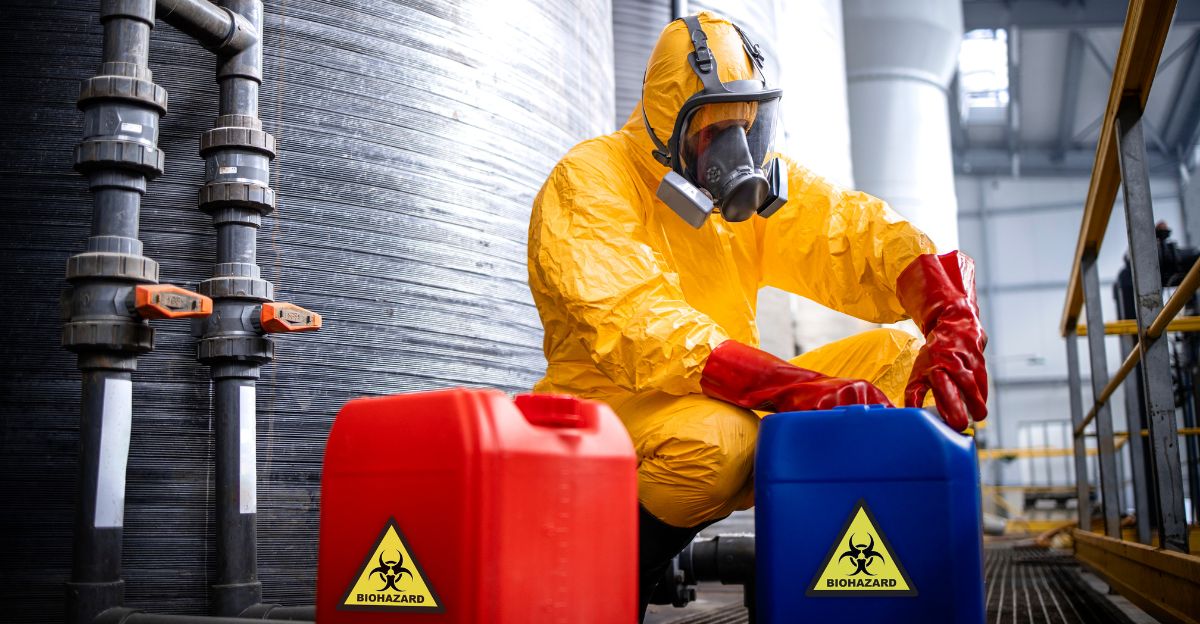
There’s so much happening in the world at the moment, and the cherry on the cake is getting a notice about groundwater pollution in your area. Recent testing revealed the presence of “forever chemicals” in the groundwater, which supplies over 400,000 residents across 47 areas in the state. The EPA’s notification follows the recent adoption of stricter regulations and the signing of the Safe Public Drinking Act, which was set to ensure drinking water is safe for residents. Can the EPA get it under control?
Scope of the Contamination

The spread of the contamination is extremely concerning, considering how many residents are possibly affected by the exposure. According to the Illinois EPA, 21 primary community water systems (CWSs) and 26 connected systems, serving a combined population of over 438,000 residents, have been found to contain levels of PFAS chemicals exceeding newly established state groundwater quality standards.
These chemicals have been found in communities across the state, including Lincoln, Marquette Heights, Rosiclare, Edwardsville, and Channahon. The contamination affects both large urban utilities and smaller municipal systems, making it even worse.
Trigger for the EPA Alert

This contamination would have gone unnoticed without the recent adoption and publication of updated state groundwater quality standards for PFAS chemicals in the Illinois Register on April 11, 2025. After the discovery, the Illinois EPA was required under the state’s Right-to-Know laws to notify community water systems and their customers.
“So the obligation for any community water supply will be to make sure that all of the people that use that water system, all of the households receive a notice of the contamination,” said Andrew Armstrong, the chief legal counsel for the Illinois EPA.
The “Forever Chemicals”

PFAS, or per- and polyfluoroalkyl substances, are a vast group of more than 10,000 synthetic chemicals often referred to as “forever chemicals” due to their extraordinary persistence in the environment. These chemicals have strong carbon-fluorine bonds, making them highly resistant to degradation by natural processes. These chemicals are widely used in nonstick cookware, food packaging, firefighting foams, and water-repellent clothing.
“They stay around for a long time, and they can accumulate in living organisms like humans. So they’re concerning because scientists have found that at even very small levels, they can cause health impacts,” said Armstrong. They’re extremely durable and can travel through soil and water, eventually ending in drinking water supplies.
Health Risks Linked to PFAS Exposure

If there’s a concern that it’s present in drinking water, surely it can’t be good for anyone’s health, especially in the long run. Studies have shown that certain PFAS can disrupt reproductive health, decreasing fertility and increasing the risk of high blood pressure during pregnancy. Children exposed to these chemicals may experience developmental delays, low birth weight, and behavioral changes.
PFAS exposure has also been associated with increased cholesterol levels, immune system suppression, and interference with natural hormone function. What makes this chemical even worse is the fact that it’s been proven to cause certain cancers like kidney and testicular cancer. Quite frankly, the list of potential health problems goes on and on, showing just how dangerous these chemicals can be.
Details on the PFAS Detected

When testing the groundwater in the area, several types of PFAS compounds were identified. These chemicals include perfluorooctanoic acid (PFOA), perfluorooctanesulfonic acid (PFOS), and perfluorohexane sulfonic acid (PFHxS), which are well-known for their persistence and toxicity.
These chemicals are part of a broader family of over 10,000 PFAS compounds, but PFOA, PFOS, and PFHxS are of particular concern due to their detection frequency, ability to accumulate in water supplies, and established links to adverse health effects.
Illinois’ Proactive Approach

Illinois has distinguished itself as one of the most proactive states in the nation when it comes to addressing the threat of PFAS contamination in drinking water. Between 2021 and 2024, the agency issued seven PFAS Health Advisories and established 16 health-based guidance levels to inform local officials and water system operators about concentrations considered safe for public health.
Illinois is also preparing for compliance with new federal Maximum Contaminant Levels by 2029 and has enacted laws restricting the sale of products containing intentionally added PFAS. “Illinois has been among the most proactive states in the country in developing and implementing PFAS health standards and groundwater quality standards,” the EPA noted.
Complexity of PFAS Removal

Removing these forever chemicals from the water might be more challenging than one may think. PFAS encompass over 10,000 distinct compounds with varying chain lengths and functional groups, making it impossible for any single treatment method to address all variants effectively. Activated carbon adsorption and ion exchange resins are great at capturing long-chain PFAS but struggle with shorter-chain compounds. Other treatments like reverse osmosis and nanofiltration achieve higher removal rates across PFAS types but require energy-intensive operations, making removing these chemicals from the water even more challenging.
“Groundwater is like the kind of water that’s inside a sponge. If I take a sponge that’s completely full of water and I set it here on my bench, the water will flow out of it, but it’ll take a long time. If I have contaminants in my sponge, they’re not gonna move any faster than the water does,” said John Ferry, a UIS Professor of Integrated Sciences, Sustainability, and Public Health.
Advice for Residents

Residents in areas affected by PFAS contamination can take several practical steps to reduce exposure and protect their health. Taking precautionary measures can help residents feel safer about the water they drink. According to the released public health notice, using an “NSF/ANSI 53 or 58 certified water filter can reduce PFAS levels.”
Beyond water, residents can limit exposure by replacing old or damaged nonstick cookware, choosing stainless steel or cast iron alternatives, and minimizing using fast food packaging and microwave popcorn bags, which often contain PFAS.
Ongoing Monitoring and Future Actions

The EPA’s alert is part of ongoing efforts to monitor and address PFAS contamination. “It’s not always traceable to a certain source, and in fact, it’s often not traceable to a certain source. So the most important thing that we are looking at at this point is what we can do to get it out of people’s drinking water,” Armstrong said.
This state-level effort is complemented by federal initiatives, including the U.S. EPA’s PFAS testing under the fifth Unregulated Contaminant Monitoring Rule (UCMR 5) from 2023 to 2025, which aims to better understand the prevalence of PFAS in drinking water nationwide.
Explore more of our trending stories and hit Follow to keep them coming to your feed!

Don’t miss out on more stories like this! Hit the Follow button at the top of this article to stay updated with the latest news. Share your thoughts in the comments—we’d love to hear from you!







